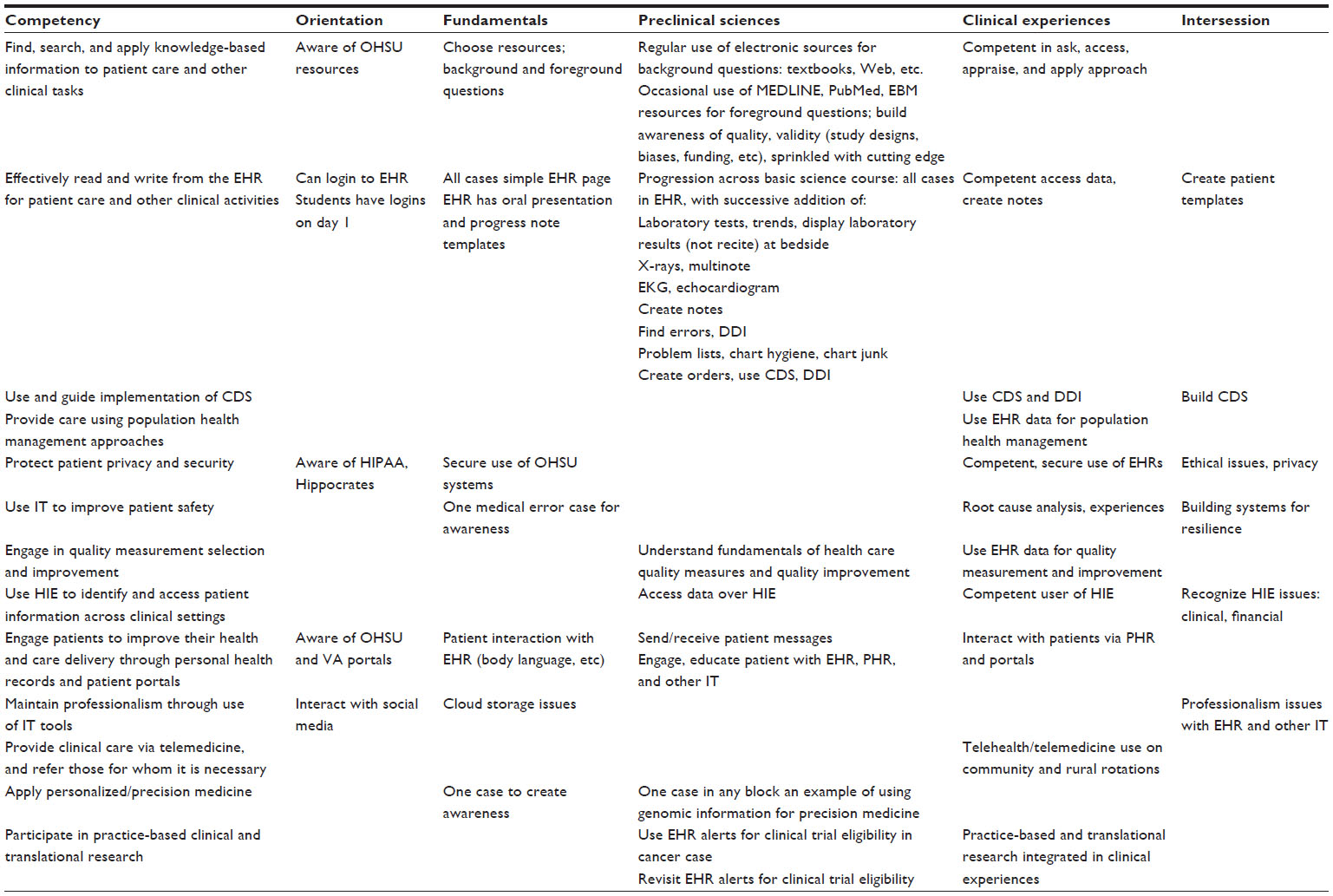Difference between revisions of "Template:Article of the week"
Shawndouglas (talk | contribs) (Updated article of the week text.) |
Shawndouglas (talk | contribs) (Updated article of the week text.) |
||
| Line 1: | Line 1: | ||
<div style="float: left; margin: 0.5em 0.9em 0.4em 0em;">[[File: | <div style="float: left; margin: 0.5em 0.9em 0.4em 0em;">[[File:Tab2 Hersh AdvancesMedEdPrac2014 2014-5.jpg|220px]]</div> | ||
'''"[[Journal: | '''"[[Journal:Beyond information retrieval and electronic health record use: Competencies in clinical informatics for medical education|Beyond information retrieval and electronic health record use: Competencies in clinical informatics for medical education]]"''' | ||
Physicians in the 21st century will increasingly interact in diverse ways with information systems, requiring competence in many aspects of [[clinical informatics]]. In recent years, many medical school curricula have added content in [[information]] retrieval (search) and basic use of the [[electronic health record]]. However, this omits the growing number of other ways that physicians are interacting with information that includes activities such as [[Clinical decision support system|clinical decision support]], quality measurement and improvement, personal health records, telemedicine, and personalized medicine. We describe a process whereby six faculty members representing different perspectives came together to define competencies in clinical informatics for a curriculum transformation process occurring at Oregon Health & Science University. From the broad competencies, we also developed specific learning objectives and milestones, an implementation schedule, and mapping to general competency domains. We present our work to encourage debate and refinement as well as facilitate evaluation in this area. ('''[[Journal:Beyond information retrieval and electronic health record use: Competencies in clinical informatics for medical education|Full article...]]''')<br /> | |||
<br /> | <br /> | ||
''Recently featured'': [[Journal:iLAP: A workflow-driven software for experimental protocol development, data acquisition and analysis|iLAP: A workflow-driven software for experimental protocol development, data acquisition and analysis]][[Journal:The evolution, use, and effects of integrated personal health records: A narrative review|The evolution, use, and effects of integrated personal health records: A narrative review | ''Recently featured'': [[Journal:Analyzing huge pathology images with open source software|Analyzing huge pathology images with open source software]], [[Journal:iLAP: A workflow-driven software for experimental protocol development, data acquisition and analysis|iLAP: A workflow-driven software for experimental protocol development, data acquisition and analysis]][[Journal:The evolution, use, and effects of integrated personal health records: A narrative review|The evolution, use, and effects of integrated personal health records: A narrative review]] | ||
Revision as of 15:05, 12 October 2015
Physicians in the 21st century will increasingly interact in diverse ways with information systems, requiring competence in many aspects of clinical informatics. In recent years, many medical school curricula have added content in information retrieval (search) and basic use of the electronic health record. However, this omits the growing number of other ways that physicians are interacting with information that includes activities such as clinical decision support, quality measurement and improvement, personal health records, telemedicine, and personalized medicine. We describe a process whereby six faculty members representing different perspectives came together to define competencies in clinical informatics for a curriculum transformation process occurring at Oregon Health & Science University. From the broad competencies, we also developed specific learning objectives and milestones, an implementation schedule, and mapping to general competency domains. We present our work to encourage debate and refinement as well as facilitate evaluation in this area. (Full article...)
Recently featured: Analyzing huge pathology images with open source software, iLAP: A workflow-driven software for experimental protocol development, data acquisition and analysisThe evolution, use, and effects of integrated personal health records: A narrative review










